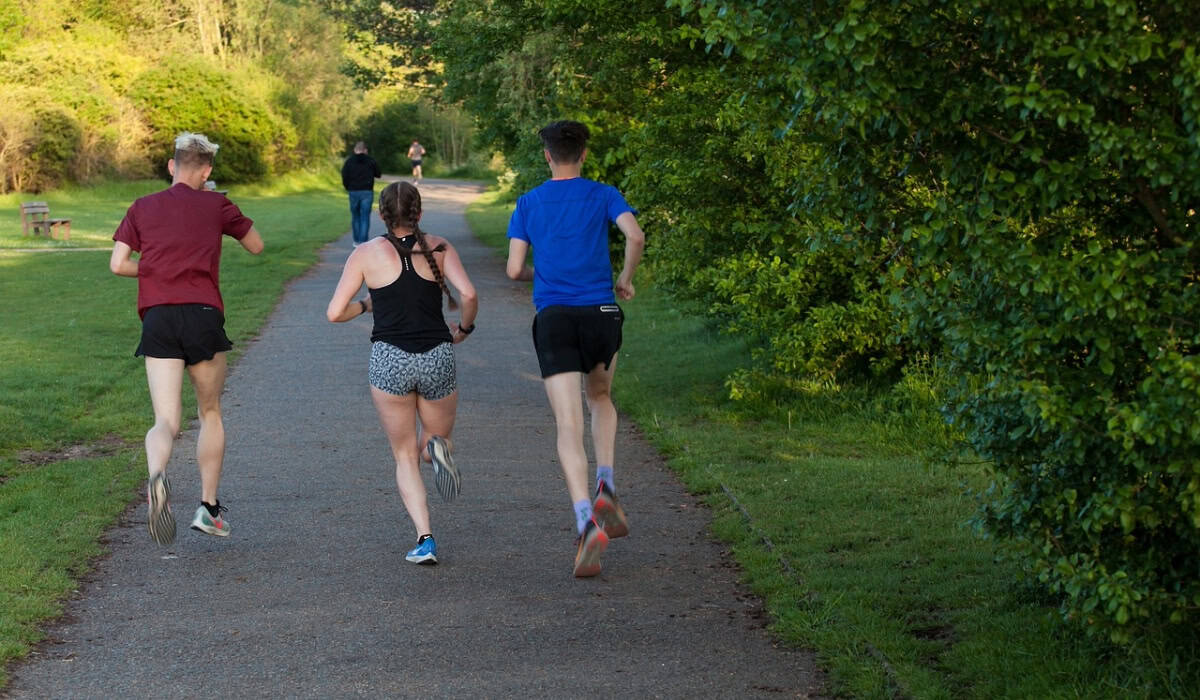A Comprehensive Guide
When you move your body, something amazing happens to your blood sugar levels. Just like a key opens a lock, exercise helps unlock your body’s ability to use sugar properly. This guide will walk you through how staying active can keep your blood sugar levels in check, making you feel better and helping your body work the way it should.
The Importance of Physical Activity for Blood Sugar Control
Physical activity plays a huge role in managing your blood sugar levels. It’s like a puzzle piece that fits perfectly into your daily routine, helping to balance the food you eat and the medication you may take. By moving more, you reduce your need for insulin secretagogues and lower your risk for hypoglycemia, making it easier to keep your blood sugar levels stable.
Understanding the Link Between Blood Glucose and Exercise
Every time you exercise, you’re giving your body a helping hand in managing your blood glucose. Regular blood glucose checks before and after working out can show you exactly how exercise affects your levels, helping you stay in control and make smarter choices for your health.
The Role of Insulin Sensitivity Improvement
One of the main benefits of exercise is how it improves your body’s sensitivity to insulin. This means your body does a better job using the carbohydrate intake from your food for energy, which can help keep your blood sugar levels from going too high or too low.
The Impact of Aerobic and Resistance Exercises
Aerobic and resistance exercises are superheroes for your insulin resistance. They work in different ways to help your muscles use sugar more effectively, which can lower your blood sugar levels and make your body’s insulin work better.
Benefits Beyond Glucose Regulation
But it’s not just about blood sugar! Exercise has a lot of other benefits, like making your heart stronger, reducing stress, and helping you sleep better. All these things are important for keeping your whole body healthy, not just your blood sugar levels.
Types of Exercises for Managing Blood Sugar Levels
There are so many ways to get moving that can help manage your blood sugar levels. From the food you eat to the physical activities you choose, everything plays a part. Aerobic exercises, resistance training, and flexibility workouts can all help. But remember, it’s important to balance high-intensity training with your risk of injury and keep an eye on your blood sugar levels, especially if you’re participating in competitive sports or trying new physical activities.
Aerobic Exercise Benefits and Recommendations
Moving your body in ways that get your heart pumping harder is what aerobic exercise is all about. This type of activity is great for fighting insulin resistance, making it easier for your body to manage blood sugar levels. Whether you’re walking, swimming, or cycling, incorporating these activities into your routine can make a big difference in your health.
Walking, Swimming, and Cycling for Blood Sugar Control
Simple activities like walking, swimming, and cycling are not only fun but are also powerful tools in your treatment plan for controlling blood sugar. They don’t require fancy equipment or a gym membership, making them an easy choice for anyone looking to improve their health.
Resistance Training for Blood Sugar Management
Lifting weights and doing bodyweight exercises are key for building muscle and managing blood sugar. When you increase your muscle mass, your body uses insulin better. This type of exercise can be a game-changer in how you manage your diabetes and keep your blood sugar levels steady.
How Weight Lifting and Bodyweight Exercises Assist in Glucose Regulation
By focusing on building strength, weight lifting and bodyweight exercises help your body use glucose more efficiently. This can lead to improvements in blood sugar control, showing that these activities are an important part of managing diabetes and keeping your blood sugar levels in a healthy range.
Flexibility and Balance Activities
Exercises that improve your flexibility and balance, like yoga and Tai Chi, can also play a part in stabilizing your blood glucose. These activities help reduce stress, which can have a positive effect on blood sugar levels, making them a valuable addition to your exercise routine.
Yoga and Tai Chi for Blood Glucose Stability
Yoga and Tai Chi are not just about stretching and balance. They’re about creating a calm mind and a strong body. These practices can help you manage your diabetes by reducing stress and keeping your blood glucose levels stable.
Exercising with Diabetes Complications
If you have diabetes, exercise is still a key part of managing your condition, but it’s important to do it safely. Monitoring blood glucose levels before, during, and after exercise can help you avoid complications and make the most of your physical activity.
Hypoglycemia Awareness and Management Strategies
Being active lowers your blood sugar, so if you’re taking insulin or insulin secretagogues, you’re at a higher risk for hypoglycemia. Learning to recognize the signs and knowing how to manage it are crucial steps in keeping yourself safe while you enjoy the benefits of exercise.
Following the 15-15 Rule to Prevent Low Blood Sugar
If you’re worried about your blood sugar dropping too low during or after exercise, the 15-15 Rule can help. This means eating 15 grams of carbs and then waiting 15 minutes. Check your blood sugar again. If it’s still low, have another 15 grams of carbs. This method helps you stay safe while being active.
Addressing Hyperglycemia with Physical Activity
Did you know moving your body can lower high blood sugar? If your blood sugar is up, doing some exercise can help bring it down. But, if you’re at risk for hypoglycemia, talk to your doctor first. They can help you find safe ways to use exercise to manage your blood sugar.
The Importance of Monitoring Blood Sugar Levels Pre and Post-Exercise
Keeping an eye on your blood sugar levels before and after you exercise is super important. This helps you see how different activities affect you. Plus, it can stop your blood sugar from going too high or too low. Always check your levels to stay safe and healthy.
Nutrition and Hydration for Optimized Exercise Performance
Eating right and staying hydrated are key to getting the most out of your workouts. The right snacks and drinks can give you the energy you need. Plus, they help your body recover afterwards. Remember, what you put into your body is just as important as your physical activity.
Sports Drinks’ Impact on Blood Glucose
Sports drinks can affect your blood sugar, especially if you’re taking diabetes medications. They can also change how stress hormones work in your body. But, they can be useful after intense workouts or weight training. They can replace lost electrolytes. Just make sure they fit into your overall plan for managing your blood sugar.
When Are Sports Drinks Appropriate for Diabetics?
Sports drinks can offer health benefits, like hydration and replacing electrolytes after intense exercise. But if you have diabetes, you need to be careful. Choose drinks with low sugar and check how they fit with your blood sugar goals. Sometimes, water might be a better choice for staying hydrated.
Eating Healthy Snacks for Sustained Energy
Choosing the right snacks is important for keeping your energy up without spiking your blood sugar. Foods that have a good mix of protein, fats, and slow-digesting carbs are great choices. They give you a steady supply of energy and help keep your blood sugar stable.
Nutritious Options That Won’t Spike Blood Sugar Levels
Snacks like nuts, seeds, whole grain crackers with cheese, or veggies with hummus are great because they don’t make your blood sugar levels jump up. These foods can help you stay full and energized, whether you’re working out or just going about your day.
Lifestyle Adjustments for Better Blood Sugar Control
Making small changes in your daily routine can have a big impact on your blood sugar control. Things like moving more, eating better, and managing stress can really help. It’s all about finding what works for you and sticking with it.
The Significance of Daily Movement
Moving around throughout the day is super important, especially if you’re trying to manage your weight or postprandial hyperglycemia. Simple activities like walking can make a big difference in how you feel and how well you manage your blood sugar.
Breaking Up Prolonged Sedentary Time for Blood Sugar Benefits
Did you know that just standing up and stretching every 30 minutes can help manage your blood sugar? It’s true! Adding little movements into your day is a key part of your treatment plan. It keeps your blood sugar more stable than sitting all day does.
Managing Stress Levels Through Physical Activity
Exercise isn’t just good for your body; it’s great for your mind, too. It can lower stress, which is really important because stress can make blood sugar harder to control. Finding activities you enjoy can help keep stress at bay and may even lower your risk of complications of diabetes.
Exercise as a Natural Stress Reliever and Its Effects on Blood Glucose
When you exercise, your body releases feel-good chemicals that can reduce stress. This not only makes you feel happier but can also help keep your blood sugar levels in a good range. So, adding physical activity to your routine is a win-win for your mood and your health.
Special Considerations for Type 2 Diabetes
Living with Type 2 diabetes means you have to think a bit differently about how you exercise. But with the right approach, physical activity can be a powerful tool for managing your condition. It’s all about finding activities that you enjoy and that fit into your life.
Physical Activity Recommendations for Adults and Youths
Everyone, no matter their age, can benefit from being active. This is especially true for those managing diabetes. Activities like balance training and regular exercise sessions can help with insulin resistance and body weight management. Plus, they bring lots of other health benefits, too.
Preventing and Treating Type 2 Diabetes with Lifestyle Interventions
Making changes to your lifestyle can play a big part in preventing and managing Type 2 diabetes. By keeping a healthy body weight, you can control your blood sugar better. This means eating well, staying active, and making good choices every day. It’s not just about avoiding sugar; it’s about creating a balanced life.
The Role of Technology in Monitoring and Enhancing Activity
Technology can be a great helper in keeping you active. Tools like fitness apps or devices that count your steps make it easy to see how much you’re moving. They can remind you to get up and move around, which is especially helpful if you sit a lot during the day.
Using Fitness Trackers and Apps for Motivation and Tracking Progress
Fitness trackers and apps are like having a personal coach with you all the time. They can show you how much you’re exercising and motivate you to keep going. They also make it fun to set goals and see your progress over time. It’s a great way to stay committed to your health.
Encouraging Adherence to Regular Physical Activity
Sticking to a regular exercise routine can be tough, but it’s key for managing blood sugar. Finding activities you enjoy and setting a regular schedule can help. Remember, every bit of movement counts, so even short walks or taking the stairs can add up.
Behavior-Change Strategies for Long-Term Success
Changing your behavior for better health starts with small steps. Setting clear, achievable goals and tracking your progress helps a lot. It’s also important to be kind to yourself. Everyone has setbacks, but what matters is getting back on track.
Setting Realistic Goals and Celebrating Milestones
When you set goals, make sure they’re realistic and reachable. Small wins are still wins, so celebrate your progress. This will keep you motivated. Remember, improving your health is a marathon, not a sprint. Celebrating milestones makes the journey more enjoyable.
The Power of Community and Support Groups
Having support from others can make a big difference in staying active. Whether it’s friends, family, or an exercise group, being around others who share your goals can boost your motivation. It’s easier to stay on track when you’re not doing it alone.
Finding Your “Exercise Family” to Stay Motivated
Look for an “exercise family” – a group of people who encourage each other to stay active. This could be a walking group, a fitness class, or even online communities. Sharing your journey with others makes it more fun and keeps you motivated.
Safety First: Pre-exercise Screening and Health Evaluation
Before you start any new exercise program, it’s a good idea to check with a healthcare provider. They can make sure the activities you choose are safe for you. This is especially important if you have health issues like diabetes.
Understanding When and How to Exercise Safely
Knowing how to exercise safely is key. This includes warming up before you start and cooling down when you’re done. It also means listening to your body and not pushing too hard. Safe exercise helps you avoid injuries and stay healthy.
Tailoring Exercise Plans to Individual Health Conditions and Goals
Your exercise plan should match your health needs and goals. For example, if you’re just starting, you might begin with gentle activities like brisk walking. Over time, you can try different exercises to keep things interesting. The right plan helps you stay safe and make progress.
Inspiring Stories and Testimonials
Hearing about others who have improved their health through exercise can be really inspiring. It shows that it’s possible to make positive changes, no matter where you’re starting from. These stories can give you the push you need to get moving.
Real-Life Success Stories of Managing Diabetes Through Exercise
Many people have successfully managed their diabetes by getting more active. These success stories often include people who started with small steps, like walking more each day. Over time, they saw big improvements in their blood sugar levels and overall health.
How Today’s Efforts Can Change Lives Tomorrow
The efforts you make today to stay active and healthy can have a big impact on your future. Not only can it help manage conditions like diabetes, but it also improves your overall quality of life. Remember, every step you take today helps build a healthier tomorrow.
Embracing a New Way of Life
Making physical activity a regular part of your life can be one of the best decisions you make for your health. It’s not just about exercise; it’s about creating a lifestyle that keeps you feeling your best. And the best part? You can start right where you are, one step at a time.
Making Physical Activity a Joyful Part of Your Daily Routine
Finding activities that bring you joy is key to making exercise a part of your life every day. Think of physical activity not as a chore, but as a fun break in your day. Dancing in your living room, playing tag with your kids, or taking a scenic bike ride can all be exciting ways to stay active. When you choose activities that make you happy, keeping your blood sugar levels in check becomes a delightful benefit, not just a goal.
From Exercise Novice to Enthusiast: A Journey Worth Taking
Starting your fitness journey can feel daunting, but it’s a path filled with rewards, including better control of your blood sugar levels. Begin with small steps, like a daily walk, and gradually increase your activity level. Celebrate your progress along the way. As you build endurance and confidence, you’ll find yourself eager to explore new challenges and activities. This transition from novice to enthusiast not only benefits your physical health but also boosts your overall well-being.
Transforming Knowledge into Action: Your Next Steps
Now that you understand the importance of exercise for managing blood sugar levels, it’s time to put that knowledge into action. Start by setting clear, achievable goals for yourself. Whether it’s walking 30 minutes a day or trying a new exercise class each week, having specific targets can guide your journey. Remember, every step you take towards being more active is a step towards better health. Let’s make those goals a reality, one day at a time.
Practical Tips to Incorporate Exercise into Your Daily Life
Incorporating exercise into your daily routine doesn’t have to be complicated. Start by identifying times during your day when you can be more active, such as taking the stairs instead of the elevator or going for a walk during lunch breaks. Setting reminders to move or stand up every hour can also help, especially if you have a desk job. Small changes can lead to big improvements in managing your blood sugar levels and overall health.
Creating a Personalized Exercise Plan That Works for You
Every person is unique, which means there’s no one-size-fits-all exercise plan. Consider your interests, schedule, and fitness level when crafting your plan. If you enjoy the outdoors, incorporate walking or biking. If time is tight, look into short, high-intensity workouts. For those with joint concerns, swimming or water aerobics might be a good fit. Remember, the best exercise plan for managing your blood sugar levels is one that you’ll stick with, so choose activities that you look forward to.
Moving Forward: How Regular Physical Activity Can Shape Your Health Future
Embracing regular physical activity can significantly influence your health future, especially for adults with type 1 diabetes and those at risk of complications of diabetes. By making exercise a staple in your life, you not only work towards stabilizing your blood sugar levels but also improve your overall quality of life. Let’s commit to a future where we are healthier, more active, and able to enjoy life to the fullest.
Living Well with Diabetes Through Exercise
Exercise plays a crucial role in how your body responds to diabetes. A sedentary lifestyle increases your risk of diabetes, but incorporating regular physical activity can combat this. For patients with type 1 diabetes, exercise can improve glucose metabolism and reduce the need for insulin. Studies have shown that the beneficial effects of exercise include lower fasting glucose levels and reduced obesity and type 2 diabetes risk. Making exercise a part of your life is a powerful step towards living well with diabetes.
The Lasting Impact of Healthy Habits on Blood Sugar Levels and Beyond
Adopting healthy habits, such as regular physical activity, has a profound impact on your blood sugar levels and overall health. These habits can help prevent spikes in blood sugar, reduce the risk of complications, and contribute to a happier, more energetic life. By focusing on manageable changes today, you’re setting the stage for a healthier tomorrow. Let’s embrace these habits for lasting benefits to our blood sugar levels and beyond.






